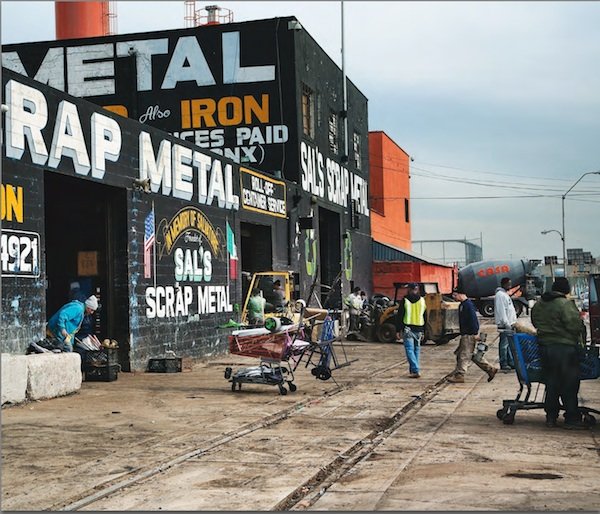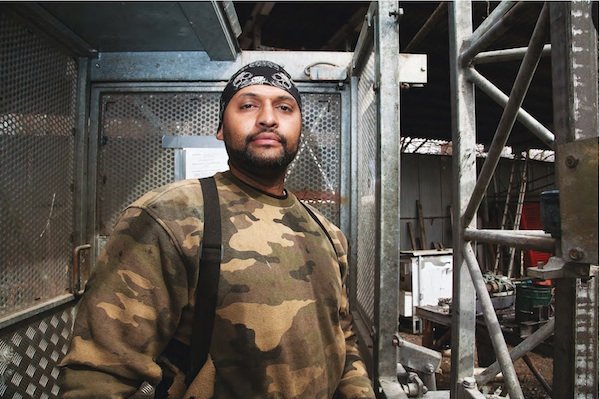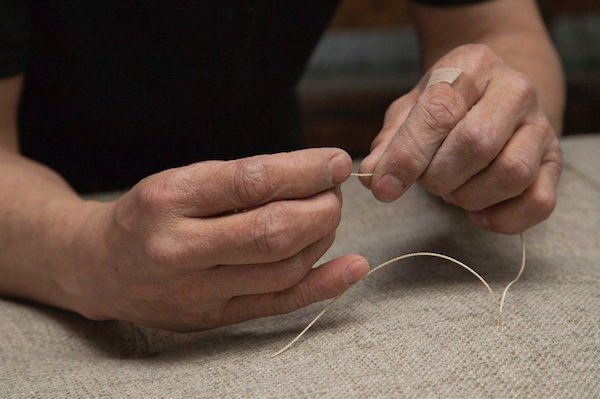Photographer Profile - Martine Fougeron: "I felt that these were unheralded people"

|
|
|
Fougeron had never heard of the neighborhood before moving there from the West Village area of Manhattan in 2009. At the time she was looking for a bigger place to live with her two teenage sons, as well as space for storage and a studio.
“A friend of mine said it was kind of neat, and I said, ‘Okay, I’ll have a look,’ she says. Fougeron went there by car the first time — a mistake. “I thought, ‘Oh my god, it took so long to get here from downtown,’” she says. The next time she took the subway — the 6 train — which was faster.
“I fell in love with the space I could have, the freedom I could have there,” she says.
Once she moved to the out-of-the-way enclave, she began to discover something hidden away within it: The unseen world of American industry unfolding inside its nondescript five- and six-story brick buildings.
“I was surprised to see all these small manufacturing and wholesale businesses,” she says. “I could see workers going into them, but it was all behind closed doors. So I became curious.”
The result is Fougeron’s series “South Bronx Trades,” a layered portrait of the businesses and the workers of the area that goes on view at the Bronx Museum tomorrow and runs through June 26. Fougeron’s images underscore both the skills and diligence of the laborers and the importance of small businesses that have traditionally offered immigrants financial stability and a path to US citizenship.
Coming in the midst of a president campaign in which immigration and jobs are hot-button issues, Fougeron’s project has a political relevance, as well as a social one, though she never planned it that way.

“When I went inside these places and saw all the people doing these amazing crafts, it seemed like it was from another century, and some of these businesses are really that old,” Fougeron says. “It was moving, because these are often family businesses, with rarely more than 30 employees, many of who have been working for these companies for decades. The owners are closely linked with the workers. Hand-sewing a custom mattress is not easy work — you’ve got to have a special touch with it, and the owners depend on the people who can do it. The workers have an incredible pride in what they do and a camaraderie among themselves. It’s palpable. You can feel it.”
As she came to know her new home, Fougeron grew intrigued by the unique view of American life that Port Morris provided her. “I felt that these were unheralded people who no one talked about. They have special skills, and all this was happening eight miles from the Metropolitan Museum,” she says. “And I thought, ‘Well, I’m going to talk about these people.'"
An Artist Amid Industry
Fougeron, who grew up in both the US and France, gave her project its title to underscore its focus on the proficiency of the workers. “They are craftsmen, which is why I used the word ‘trade.’ The photographs are about the trades people ply, not industry,” she says. “In French we have the word ‘metier,’ which is more specific to the idea. It refers to know-how.”
Fougeron captured the various trades she found in Port Morris and nearby Hunts Point — everything from industrial steel production to baking and printing — from several perspectives.
“Her compelling portraits focus on the working people; her striking landscapes place the project geographically; her environmental pictures are both informative and reflective; and her close-ups are simply beautiful abstractions. Together it adds up to a remarkable artistic document,” notes former New Yorker visuals editor Elisabeth Biondi, who curated the work for a smaller exhibition last year. (With Fougeron and a number of other artists and curators, Biondi also teaches the Photography Master Retreat each summer in the south of France.)
Among those Fougeron photographed was Nancy Reyes, who has been adorning specialty cakes at the Valencia Bakery for 23 years. “She is so devoted and writes with such care on each cake,” Fougeron says.
She also photographed workers at the Charles H. Beckley company, which has been making custom bedding since 1931, and the operations of the Down East Seafood company, which supplies high-end New York restaurants and caterers. Another company she photographed, the Bronx Brewery, hints at the gentrification that is transforming the area. The Midland Steel company, which cuts to measure 20,000-pound rolled steel coils for various uses, impressed her deeply.

“You see these massive coils being lifted by a machine that a man is operating — he can’t mess up or they would drop on him. He’s doing it instinctively, it’s like a ballet,” she says.
The most difficult part of the project was getting access, says Fougeron. “It wasn’t because the businesses had illegal workers — these are unionized places. They wouldn't have let me in otherwise,” she says. “But they don’t appreciate people looking into their affairs. They have ways of doing things they don’t want their competition to find out about.”
It took more than six months to convince some owners to allow her inside their businesses. “I showed them jpegs of all the pictures I shot, that was part of the deal to get them to trust me,” says Fougeron. She also supplied the business with free images for their websites.
“And it didn’t hurt that I was French,” she says. “I suppose they felt perhaps that, being French, I was more after beauty. And I think having an artist around just sounded exotic to them.”
Exploring Creativity
Fougeron was born in France but lived in the US as a kid in the early 1960s. Her family moved back to France in 1967, and then she returned to the US in 1972 to study at Wellesley College. She later went to work in New York as a creative director in the corporate world and became a US citizen in 1996.
“I decided to change my life after 9/11,” she says. “That really shook me, as it did most New Yorkers. I realized I wasn’t paying attention to my own creativity because I was managing others’ creativity. I decided to go back to photography, which I had been doing since was seven — my grandfather and father were both avid photographers — and you know, I don’t do anything half way.”
It was while studying at the International Center of Photography in New York that she began what would become her best known work — a long-term series and (later Steidl book) called “Teen Tribe.” The work looked intimately at the lives of her two sons as they became adolescents — what Fougeron called the “liminal state between childhood and adulthood, between the feminine and the masculine, and between innocence and a burgeoning self-identity.”

One of the reasons she started the project, she says, was to learn how to work with lights and a 4x5 camera. “All that gear was very heavy, so I took pictures in my my dining room. The whole series was basically shot in our home,” she says.
The project also allowed Fougeron to spend more time with her sons. “As a single mother working in the corporate world, I couldn’t do that, but as a photographer I could,” she says. “As I grew organically as a photographer, I realized the camera allowed me to observe them, but with a critical distance. My sons were 12 and 13 at the time, and it was important to see them no longer as children but as adolescents.”
After her move to the Bronx, she was ready to view life outside her home. “I felt the need to get away from the studio atmosphere and reach beyond my immediate family,” she says.
Ironically, Fougeron notes, what she found was another kind of family at her doorstep — people who, like her, were practicing their trade — their metier — with dedication.


